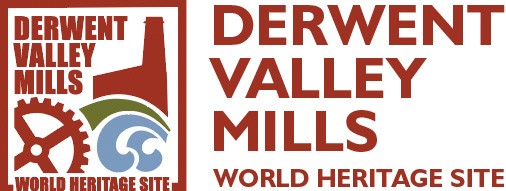Flowing through History: The Derwent Valley

Flowing through History: The Derwent Valley
Flowing through history, the Derwent Valley follows the course of the river Derwent from Matlock Bath to Derby. The Derwent Valley Mills World Heritage Site contains a fascinating series of mill complexes, the watercourses that powered them and the settlements developed for the workers. Here is a brief overview of the World Heritage Site and suggestions for places you may want to visit.
Sir Richard Arkwright’s magnificent Masson Mills at Matlock Bath stand at the northern entrance to the World Heritage Site. Established in 1783, and in continuous use until 1991, the mills house a remarkable working textile museum. Experience the sights, sounds and smells of a bygone age: the clatter of well-oiled machinery, the whirr of drive belts and wooden floors worn by generations of local millworkers’ feet.
A short distance south of Masson Mills lies Arkwright’s Cromford Mill – the world’s first successful water-powered cotton spinning mills. Building started here in 1771. The complex was saved from dereliction in the 1970s and is currently undergoing painstaking restoration. It now contains exhibition rooms, restaurant and various shops and a Visitor Centre.
As he harnessed water power to move the cotton industry out of homes and into purpose-built factories, Arkwright provided for the needs of his new workforce. Today much of Cromford – the village he created and which remained in his family’s ownership until the 1920s – remains intact. See the cottages built for workers’ families, the school, the inn, the lock-up for those who misbehaved, even the privies, allotments and pigsties that formed the backdrop to factory workers’ lives.
Before leaving Cromford, be sure to take a stroll along the Cromford Canal to the High Peak Junction Workshops and Leawood Pumphouse. From Cromford make a brief diversion to the factory shop at John Smedley’s Mill before travelling southwards to Belper.
Standing at the northern entrance to Belper is William Strutt’s North Mill of 1804. Constructed using pioneering ‘fire proof’ technology, the mill houses the Derwent Valley Visitor Centre – a must for all those wishing to discover the area’s celebrated textile traditions.
Here you will enter the lives of those who worked in the Strutt family mills, once described as “the best in England”. Find out about the fines that were imposed for misbehaviour – including the forfeits for idleness, looking through windows and making noises in the counting house! Join a tour of the factory settlement built by the Strutts for their workers from the 1780s, complete with sturdy houses, schools and chapels.
Before leaving Belper, take a moment to experience the drama of the horseshoe weir that provided power to the mills – an engineering wonder of its day – and discover the town’s beautiful River Gardens.
Following the river downstream through the historic mill village of Milford, you will arrive at the community of Darley Abbey. Here water power was already in use driving paper, corn, flint and leather mills when, in 1782, the Evans family added their cotton mills and later their factory village.
A walk through Darley Park brings you to the Silk Mill, the southern entrance to the World Heritage Site. The Silk Mill is currently undergoing a redevelopment and is due to reopen as The Museum of Making in Spring 2021. The Joseph Wright Gallery is a short walk away at the Museum and Art Gallery.
WHAT MAKES IT SPECIAL?
- The Derwent Valley Mills are significant in World History for their contribution to the development of manufacturing industry and technological innovation.
- The Derwent Valley saw the birth of the factory system, when new types of building were erected to house ground-breaking technology for water-powered manufacturing.
- To attract and retain a workforce, the mill owners provided housing and other facilities such as schools and places of worship, which resulted in the creation of the first modern industrial communities.
- The site contains a fascinating series of mill complexes, the watercourses that powered them and the settlements developed for workers. The factory system developed in the Derwent Valley was copied in many parts of Britain and abroad.
WHAT IS THERE TO SEE?
- Amongst the site’s most significant buildings are: The Silk Mill in Derby where water power was first used for silk throwing machines; the mills at Darley Abbey and Belper which represent important pioneering developments in fire-proof construction methods; and the mill complexes at Cromford and Masson Mills constructed by Richard Arkwright who extended the scale of mechanisation of cotton spinning and devised the factory production system.
- The site includes the communities that grew up around the mills to house the growing workforce comprising houses, schools, chapels and estate farms.
- The Derwent Valley Heritage Way walking route follows the River Derwent from Ladybower Reservoir to Shardlow where it joins the river Trent. Passing through the whole of the World Heritage Site, the route follows paths, tracks and some sections of road through the valley’s beautiful and heritage-rich landscapes. The route is waymarked with Purple disc.

